Background
In the actual application of wireless video transmission, many customers use it in closed spaces with obstacles and non-line-of-sight environments. Therefore, our technical team conducted environmental simulation tests in urban underground parking lots to prove our wireless The transmission module can use relay multi-hop transmission to achieve the required distance in a non-line-of-sight environment.
Different scenarios for non-line-of-sight wireless video transmission
1、 Robots’ application scenarios
With the advancement and maturity of robot technology, its application fields and scope are becoming increasingly wider. Many dangerous environments that originally required manual inspection and monitoring, such as power stations, substations, refineries, chemical plant areas, fire accident sites, disease infectious areas, microbial hazardous areas, etc.
2. UGV application scenarios
Unmanned ground vehicles usually work in various operating and challenging environments and in extreme cold and heat. It carries out measurements, patrols and monitoring in rural areas, farms, forests, wild areas and even in wading environments. It even conducts exploration, demolition and blasting of dangerous items ahead on some individual battlefields.
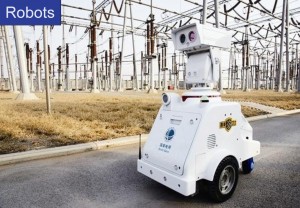
Robots and unmanned ground vehicles have largely replaced traditional manpower to complete dangerous, urgent, difficult, and repetitive tasks. While ensuring the health and safety of personnel, they also reduce overall costs and improve operation and maintenance efficiency.
Challenge
The challenges and difficulties of non-line-of-sight wireless video transmission
It is very important to transmit videos, images and other information captured by robots/autonomous vehicles during inspections to the receiving end wirelessly over long distances, so that operators can grasp the actual situation in a timely and clear manner.
Due to the complexity of the actual inspection environment, there are many buildings, metal and other obstacles blocking the way, various electromagnetic interferences, and there are also unfavorable weather factors such as rain and snow, which affects the stability and stability of the wireless video transmission system of robots/unmanned vehicles. Strict requirements are put forward for reliability and anti-interference ability.
Based on long-term research and development accumulation in the field of wireless video transmission, the wireless video transmission module launched by IWAVE can meet the needs of robot applications in various types of complex environments. Please see the test results of the following simulated scenarios.
Solution
Introduction to parking lot scene
Parking lot features:
l It covers a large area with more than 5,000 parking spaces, divided into areas A/B/C/D/E/ F/T etc.
l There are many columns in the middle and many strong solid partitions.
l Except for fire doors, it is basically impossible to penetrate communications and simulate more complex scenarios in actual applications.
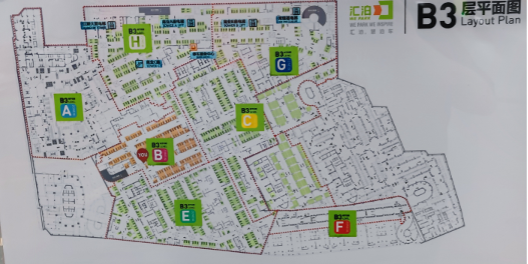
Simulation scenario layout and solutions
The transmitter modules in the plan is placed in various areas of the parking lot, and the simulated transmitter is on the robot to provide video, sensor data, and control signal transmission for robot control. The receiving end is in the control room and can be placed elevated and connected to the console. There are a total of 3 modules in the middle that serve as relay nodes to extend the distance and perform hopping transmission. A total of 5 modules are used.
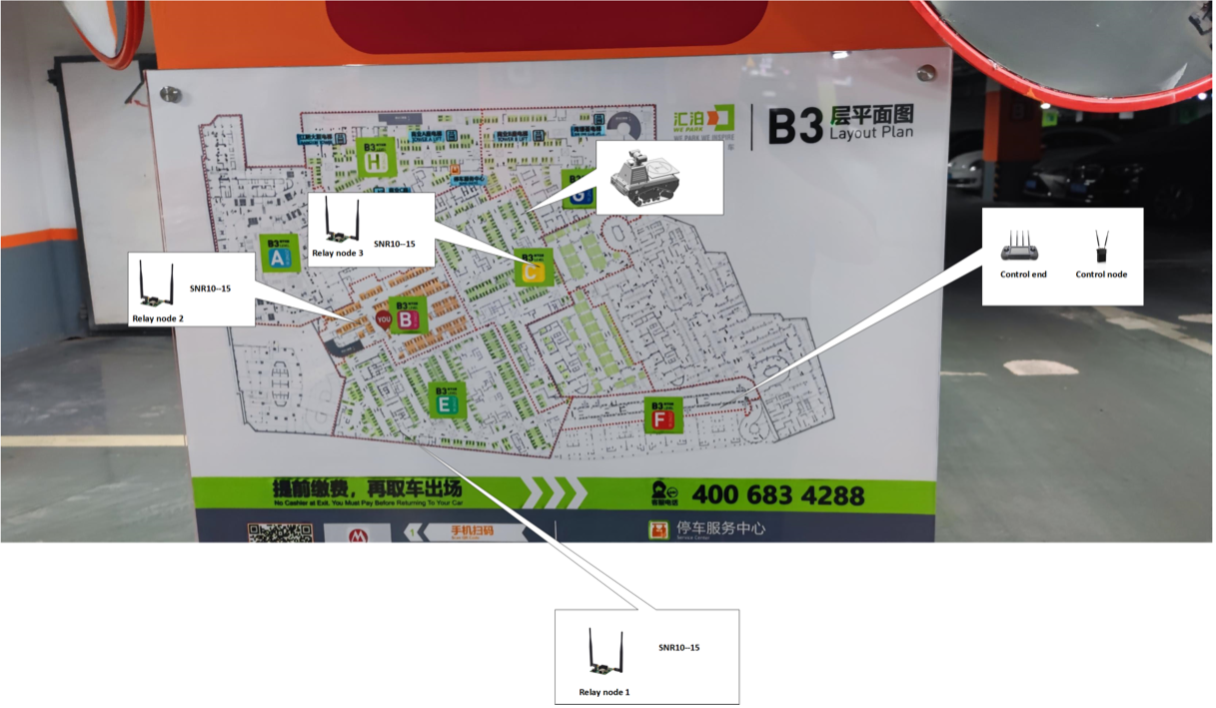
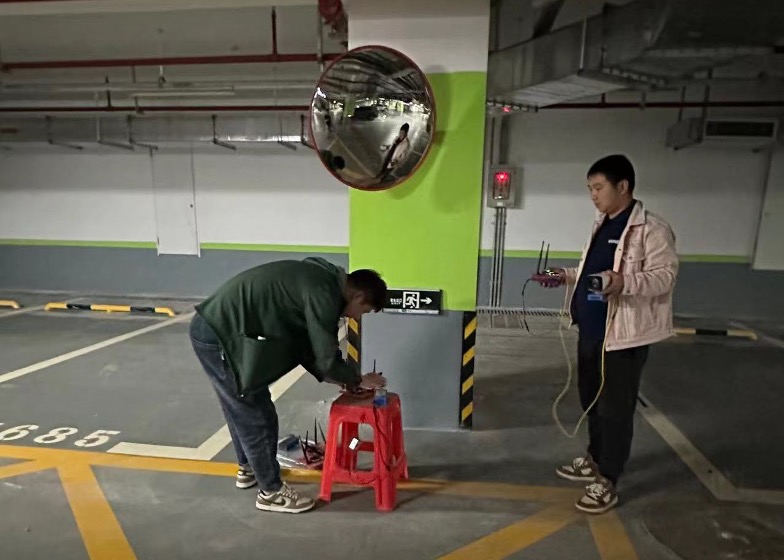
Parking lot layout diagram/Robot inspection route diagram
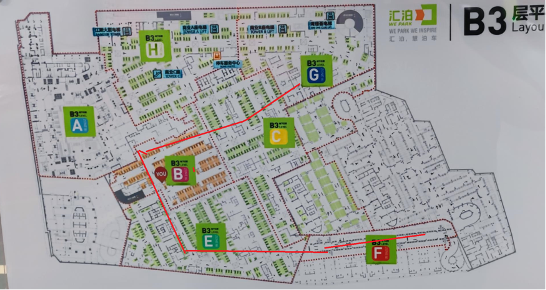
Benefits
Advantages of IWAVE wireless transmission module
1. Support mesh networking and star networking
IWAVE's wireless transmission FDM-66XX module series products supports scalable point to Multipoint networks. One master node supports 32 slaver node.
IWAVE's wireless transmission FD-61XX module series products supports MESH self- organized networking.It doesn't rely on any carrier's base station and support 32 nodes hoopings.
2.Excellent non-line-of-sight transmission capability, high bandwidth transmission speed supports 1080P video transmission
Based on OFDM and anti-multipath technology, the IWAVE wireless transmission module has excellent non-line-of-sight transmission capabilities, ensuring the stability of video transmission in complex, non-visual environments. The ground transmission distance can reach 500-1500meter and supports 1080p video transmission. and the transmission of various control signals.
3.Excellent anti-interference ability
OFDM and MIMO technologies bring excellent anti-interference capabilities to this series of products , ensuring stable operation in complex electromagnetic environments such as power stations.
4.Support data transparent transmission
IWAVE's wireless transmission module supports TTL, RS422/RS232 protocols, and is equipped with a 100Mbps Ethernet port and serial port . It can transmit high-definition video and control data at the same time to meet the application needs of various types of professional robots.
5.Industry-leading video transmission delay, as low as 20ms
Laboratory tests show that the video transmission delay of the IWAVE's wireless transmission module series is only 20ms, which is lower and better than most video transmission delays currently on the market . The extremely low latency will help the back-end command center monitor in time, control robot actions, and accurately complete tasks in complex environments.
6.Supports two-way encrypted transmission of private protocols to ensure information security
Robot inspections are currently used in explosive disposal, firefighting, border defense and other scenarios, and have high requirements for data security. IWAVE's wireless transmission module series products support encrypted transmission based on private protocols, effectively ensuring data security and confidentiality.
Post time: Dec-15-2023






